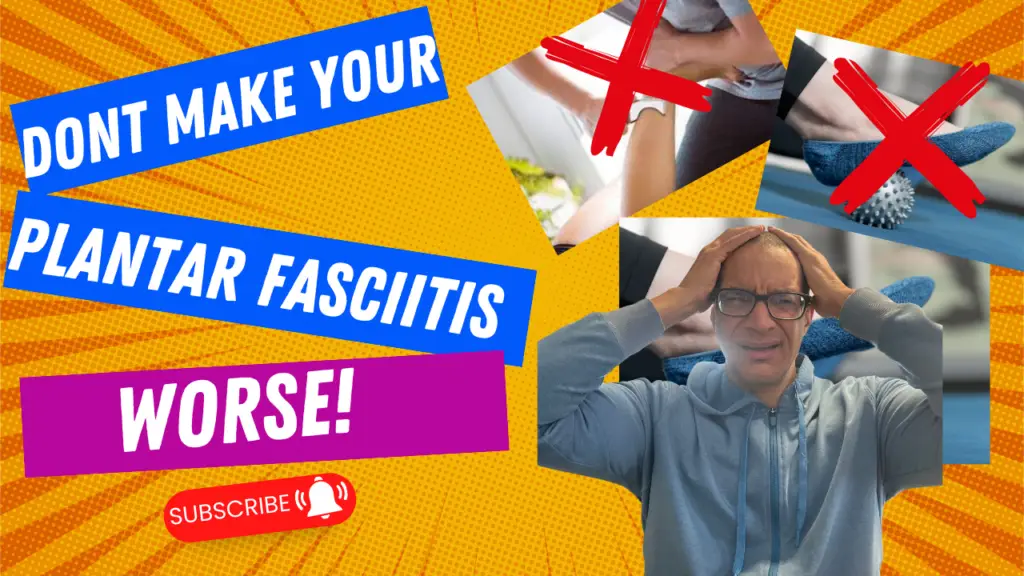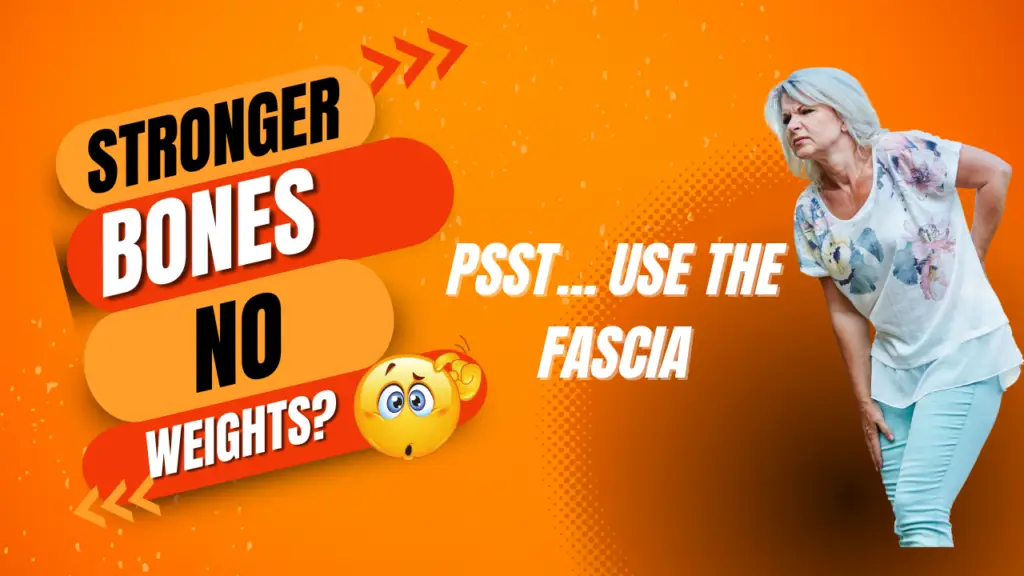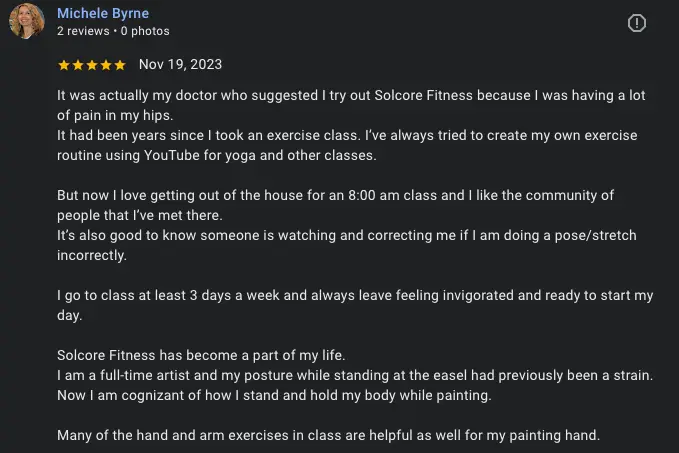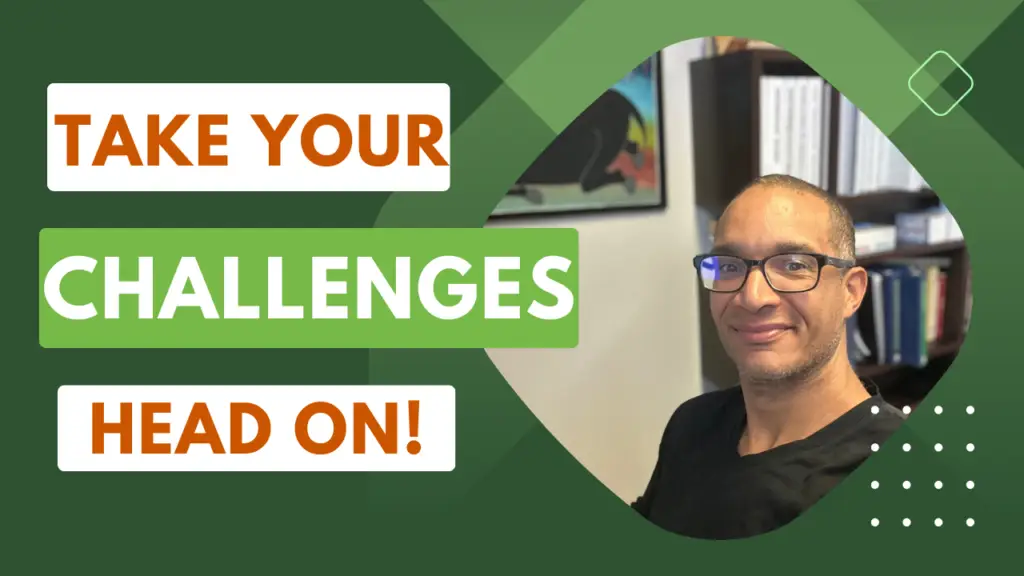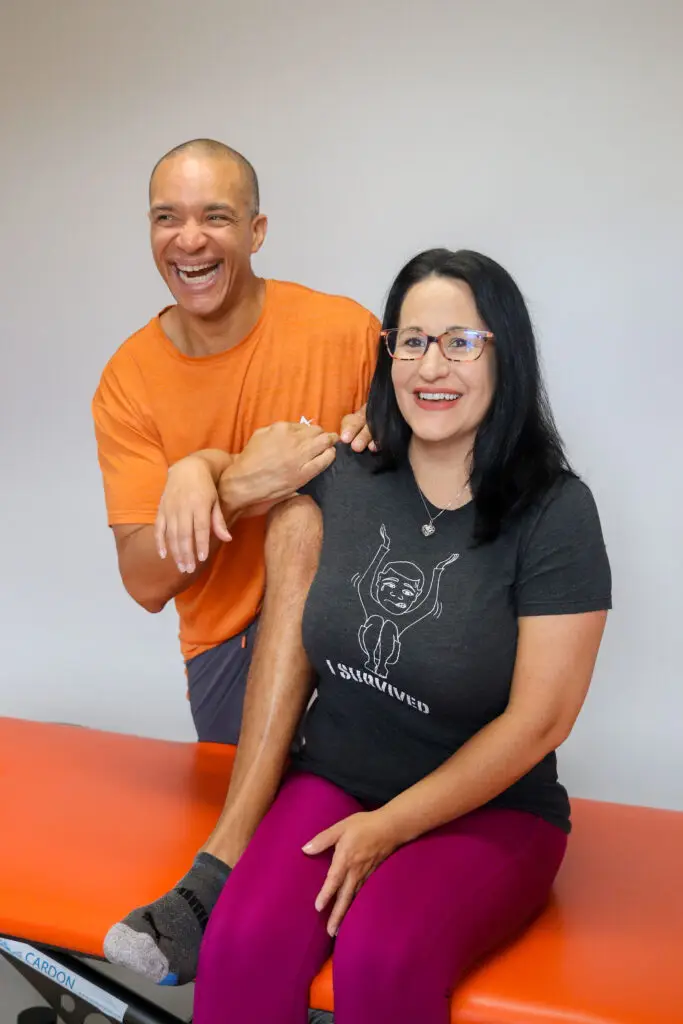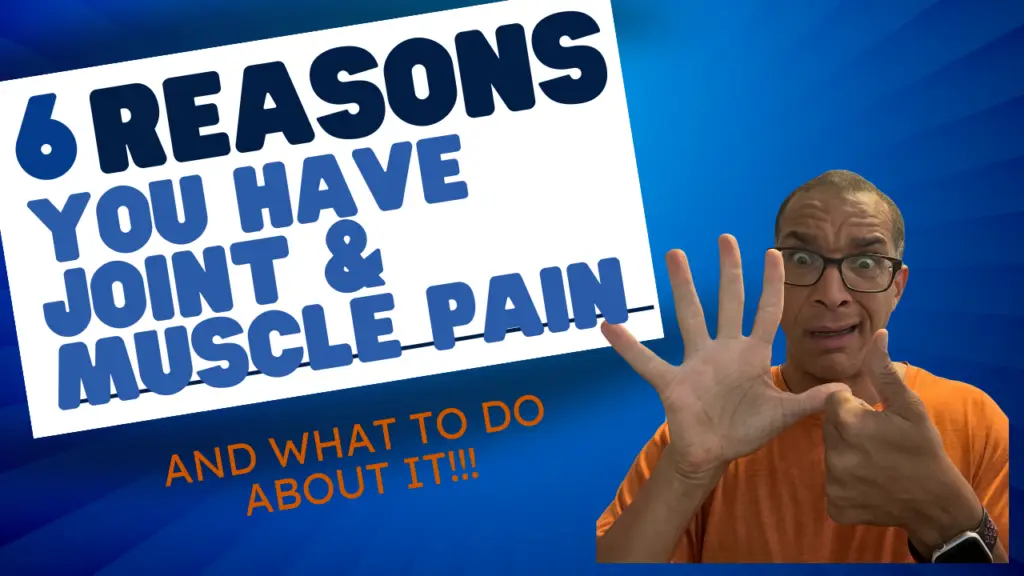
Sometimes, what you’re doing just stops working. For Amber, it took years of yoga, chronic pain, and a sudden breakdown to realize her body needed something different. This is her story—and how SolCore Fitness helped her shift from injury to healing.
When Pain Overrides the Pose
Amber had been practicing yoga since she was 19. It was more than a workout—it was a lifestyle. She loved the wildness, the philosophy, the breath work, and the physicality.
But over time, yoga shifted. The deeper, spiritual practice faded, replaced by fast-paced, athletic movements. Like many, Amber had flexibility—but not mobility or strength. She could move into poses, but her body couldn’t support them.
Eventually, her back gave out.
“It was the day after Thanksgiving. I stepped out of the car and literally couldn’t move. I crawled up the stairs to my mom’s house. It was terrifying.”
That moment wasn’t random. It was the result of years of compensation, strain, and bypassing the body’s needs. Her long-time bodyworker warned her:
“You’re too stretchy. You need real strength.”
Why Yoga Alone Couldn’t Help
Amber loved yoga. But she realized she had been using it to avoid—not address—her deeper structural issues. Like many, she thought movement alone was enough. But flexibility without strength, and effort without direction, only made things worse.
“I didn’t want to bash yoga. But I had to admit—it wasn’t working. My body needed something more holistic, structured, and biomechanically sound.”
Enter SolCore Fitness.
A New Approach: Structured, Subtle, and Demanding
Amber admits it wasn’t easy at first.
SolCore’s program required consistency and re-learning. The exercises were unfamiliar and subtle—but also deeply challenging.
“It was counterintuitive. I had to unlearn how I’d been moving for decades. But the subtlety was powerful. Within six months, I was 75% better.”
Through personalized training and a focus on fascia, mobility, strength, and proprioception, Amber rebuilt her foundation. The back pain lessened. Her posture improved. Her nervous system regulated.
And maybe most importantly, she reclaimed her relationship with her body.
Lasting Changes and a New Way Forward
Amber still has a desk job. She still feels occasional pain. But now she knows how to manage it. She’s no longer dependent on yoga poses to feel “better.”
She’s walking more, doing breathwork, meditating again—and she can sit in silence without discomfort.
“This has helped me return to the real yoga: presence, breath, and awareness. I found a better balance.”
Her advice?
“Don’t wait until things break down. Be willing to change. What worked in your 20s won’t work forever. Find a system that evolves with you.”
Want to Explore a Better Path for Your Body?
Amber’s story is one of many. At SolCore Fitness & Therapy, we help people get out of pain and into possibility through a method that combines manual therapy, fascia-based training, and deep biomechanical insight.
💬 Curious if it’s right for you? Click here to schedule a free consult.
📄 Want the case study version? Click here to download.
Building a foundation for a better life.
Find out more @

